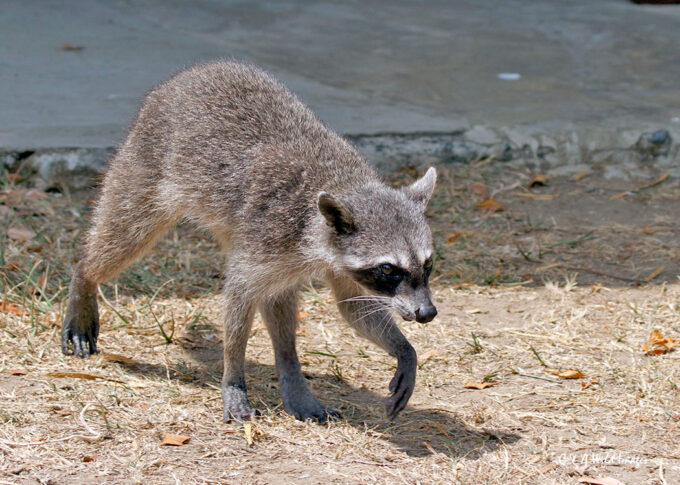
Have you ever heard of the Crab-Eating Raccoon, a fascinating coastal cousin of the common ‘trash panda’?
Most people picture raccoons rifling through trash cans in suburban neighborhoods—but in the mangroves and wetlands of Central and South America, a lesser-known cousin prefers crab claws to pizza crusts.
Meet the Crab-Eating Raccoon (Procyon cancrivorus), a wilder, more water-loving version of the familiar masked bandit. With its coastal lifestyle and crustacean-heavy diet, this raccoon has carved out a niche of its own along riverbanks and shorelines.
What Is the Crab-Eating Raccoon?
Despite the name, the crab-eating raccoon isn’t a separate genus—it’s a close relative of the common raccoon (Procyon lotor). Native to tropical and subtropical regions of Central and South America, this species thrives in wet, marshy environments where crustaceans and amphibians abound.
And yes—it really does eat a lot of crabs.
Fast Facts:
- Scientific name: Procyon cancrivorus
- Size: About 2–3 feet long (tail included)
- Weight: 10–20 pounds
- Habitat: Wetlands, mangroves, riversides, tropical forests
- Range: From Costa Rica down to northern Argentina
- Activity: Nocturnal and solitary
- Diet: Omnivorous, but fond of aquatic prey
What Does It Look Like?
Crab-eating raccoons look very similar to common raccoons, with a few subtle differences:
- Slightly longer legs
- Darker, shaggier fur
- Narrower face
- Same iconic black “mask” and ringed tail
These traits help it move more efficiently through wetlands and dense underbrush.
What’s on the Menu?
Despite the name, crab-eating raccoons are opportunistic omnivores, just like their North American relatives. But they show a strong preference for aquatic prey, including:
- Crabs and crayfish
- Frogs and small fish
- Snails and aquatic insects
- Eggs, fruits, and seeds
They forage at night along the water’s edge, using their highly sensitive paws to feel for prey in mud and shallow streams.
Where Do They Live?
Crab-eating raccoons inhabit a wide range of wet and forested environments, including:
- Mangroves
- Riverbanks
- Swamps and marshes
- Rainforests
They’re especially common in the Amazon Basin, where waterways are abundant.
Clever and Adaptable
Like all raccoons, this species is intelligent and resourceful. It can climb trees, swim well, and learn quickly—traits that help it navigate dynamic river ecosystems full of both opportunity and danger.
While they’re generally shy around humans, crab-eating raccoons may venture into agricultural areas or human settlements near wetlands.
Conservation Status
Currently, the crab-eating raccoon is listed as a species of Least Concern by the IUCN. It has a wide range and a flexible diet, which helps buffer it from extinction risks.
However, it still faces threats from:
- Habitat destruction
- Water pollution
- Expansion of agriculture and development
Wetlands are among the most threatened ecosystems on Earth, and species like the crab-eating raccoon depend on them.
Raccoon, Reinvented
The crab-eating raccoon is a fascinating example of how a familiar species can evolve to thrive in dramatically different environments. Whether cracking crabs in a mangrove swamp or scavenging in a rainforest, this adaptable mammal proves that raccoons are much more than just city-dwelling mischief-makers.
Final Thoughts
Crab-eating raccoons may be lesser-known, but they’re just as clever, curious, and ecologically important as their northern cousins. They’re one of the many raccoon relatives that showcase the incredible diversity of the Procyonidae family—from mountaintops to mangroves.
Want more from the raccoon family? Don’t miss our profiles on the olingo, olinguito, kinkajou, and coati—each with their own quirks and habitats!
More photos below ↓







Disclaimer: This blog post is for edutainment purposes only and may not be entirely accurate.






